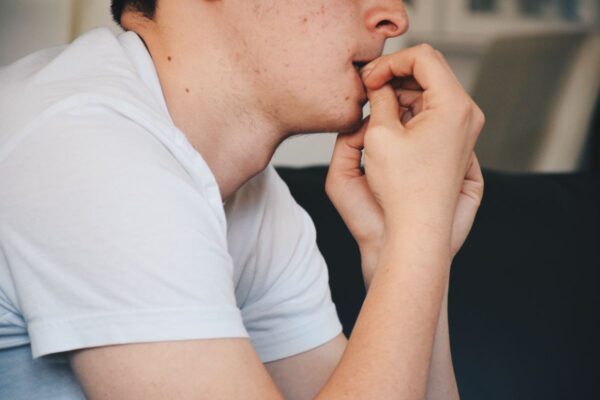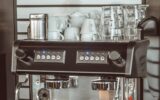Cockroaches are widespread pests found globally. Known for their adaptability, they can live, eat, and reproduce in homes unnoticed.
Although they typically don’t bite, cockroaches can pose health risks in infested houses or apartments. Some individuals may develop allergy or asthma symptoms from inhaling cockroach skin and waste.
If you suspect a cockroach problem, don’t panic. Finding cockroaches doesn’t necessarily indicate poor cleanliness. Even in clean homes, cockroaches can find food and water easily, allowing them to thrive in various environments.
What attracts cockroaches?
Cockroaches are attracted to several factors in a household or environment, primarily related to their needs for food, water, and shelter. Here are some common attractions for cockroaches:
- Food Sources:
- Crumbs and Spills: Food particles, crumbs, and spills left on countertops, floors, and tables.
- Unsealed Food: Open or improperly sealed food containers, especially those containing sugary, starchy, or greasy foods.
- Pet Food: Pet food left out in bowls or bags.
- Garbage: Accessible garbage cans with food waste.
- Water Sources:
- Leaky Pipes: Leaks in plumbing under sinks, behind toilets, or in basements.
- Standing Water: Puddles, pet water dishes, or water left in sinks and tubs.
- Moisture: Damp areas such as bathrooms, kitchens, basements, and laundry rooms.
- Shelter:
- Clutter: Piles of newspapers, cardboard boxes, and other clutter provide hiding places.
- Warmth: Warm and dark environments like behind appliances, under sinks, and inside walls.
- Cracks and Crevices: Small openings in walls, floors, and foundations where they can hide.
- Other Attractants:
- Odors: Certain smells, such as food, garbage, and even pheromones left by other cockroaches, can attract them.
- Darkness: Cockroaches are nocturnal and are attracted to dark and hidden places.
To prevent cockroach infestations, it’s important to keep your home clean, store food properly, fix leaks, reduce clutter, and seal entry points.

Are cockroaches harmful to humans?
cockroaches can be harmful to humans in several ways:
- Allergies and Asthma:
- Cockroach droppings, saliva, and shed skin contain allergens that can trigger allergic reactions and asthma attacks, especially in children and sensitive individuals.
- Disease Transmission:
- Cockroaches can carry and spread various pathogens, including bacteria, viruses, and parasites. They can contaminate food, utensils, and surfaces with these pathogens, leading to foodborne illnesses.
- Diseases associated with cockroaches include Salmonella, E. coli, and other gastrointestinal infections.
- Contamination:
- Cockroaches often crawl through dirty areas, such as sewers and garbage, picking up harmful microbes on their bodies and legs. When they move into homes, they can transfer these microbes to food and surfaces, posing a health risk.
- Bites:
- While rare, cockroaches can bite humans, particularly in cases of severe infestations. Bites can cause skin irritation, swelling, and, in some cases, secondary infections.
- Psychological Impact:
- The presence of cockroaches can cause significant stress and anxiety for many people, affecting their mental well-being and quality of life.
To mitigate these risks, it’s important to maintain good hygiene, promptly address infestations, and take preventative measures to keep cockroaches out of the home.

Can I permanently get rid of cockroaches in my house?
- Cleanliness:
- Regular Cleaning: Clean your home thoroughly and regularly, paying special attention to the kitchen and bathroom where food and moisture are prevalent.
- Food Storage: Store food in airtight containers and avoid leaving food out overnight. Clean up crumbs, spills, and food residue immediately.
- Garbage Management: Dispose of garbage regularly and use trash cans with tight-fitting lids.
- Eliminate Water Sources:
- Fix Leaks: Repair any leaky pipes, faucets, and other sources of moisture.
- Dry Areas: Keep sinks, bathtubs, and other water sources dry when not in use. Ensure good ventilation in damp areas like bathrooms and basements.
- Reduce Clutter:
- Declutter: Remove piles of newspapers, cardboard boxes, and other clutter that can provide hiding places for cockroaches.
- Organize Storage: Keep storage areas organized and clean.
- Seal Entry Points:
- Seal Cracks and Gaps: Use caulk or sealant to close gaps around windows, doors, pipes, and other entry points where cockroaches can enter your home.
- Install Door Sweeps: Place door sweeps on exterior doors to prevent cockroaches from entering.
- Use Baits and Traps:
- Bait Stations: Place cockroach bait stations in areas where cockroaches are commonly seen. These baits contain poison that the cockroaches carry back to their nest, effectively killing other members of the colony.
- Glue Traps: Use glue traps to monitor and reduce cockroach populations.
- Natural Remedies:
- Boric Acid: Apply boric acid in cracks, crevices, and other areas where cockroaches travel. Boric acid is toxic to cockroaches but safe for humans and pets when used correctly.
- Diatomaceous Earth: Spread food-grade diatomaceous earth in areas where cockroaches are active. It dehydrates and kills them without the use of chemicals.
- Professional Pest Control:
- Hire Exterminators: If you have a severe infestation, consider hiring a professional pest control service. They have access to stronger insecticides and can provide a more comprehensive treatment plan.
- Preventive Maintenance:
- Regular Inspections: Regularly inspect your home for signs of cockroaches and take action immediately if you see any.
- Ongoing Efforts: Maintaining cleanliness and vigilance is key to preventing future infestations.
By combining these strategies and maintaining good habits, you can significantly reduce the likelihood of cockroach infestations and keep your home cockroach-free.

Managing an infestation
To effectively manage a cockroach infestation, consider developing an Integrated Pest Management (IPM) plan. This approach combines various strategies tailored to cockroach behaviour, aiming to eliminate pests safely and efficiently.
Start by identifying the type of cockroach species in your home. Knowing this helps understand their biology and behaviours, crucial for effective control. Contact Pest Control Brisbane.com for assistance in species identification.
Here are practical steps to take control of a cockroach infestation:
- Locate Hiding Spots: Identify and target active hiding places, focusing on warm areas with access to water. Use sticky traps to pinpoint areas of high cockroach activity.
- Prevention and Monitoring: Continuously implement prevention measures to make your home less inviting to cockroaches. Regular monitoring helps detect any resurgence.
- Reduce Clutter: Remove clutter that cockroaches could use for shelter and breeding, reducing their hiding spots.
- Pesticide Use: If using pesticides, opt for the least toxic options first. Always read and follow the label instructions carefully to ensure safe and effective application.
Following these steps and staying on top of things, you can totally manage and cut down on cockroach infestations in your home.






wzhmub